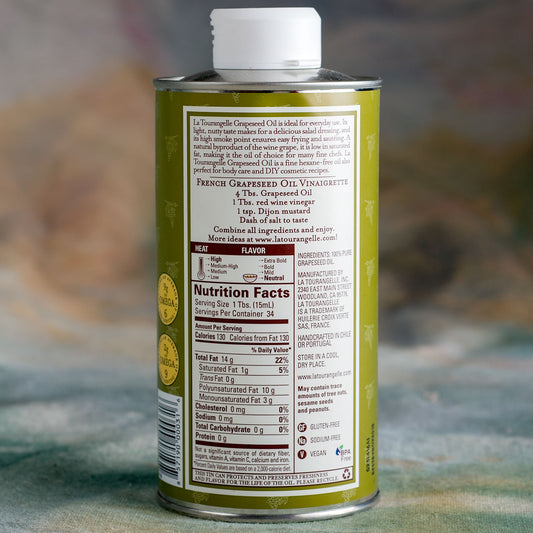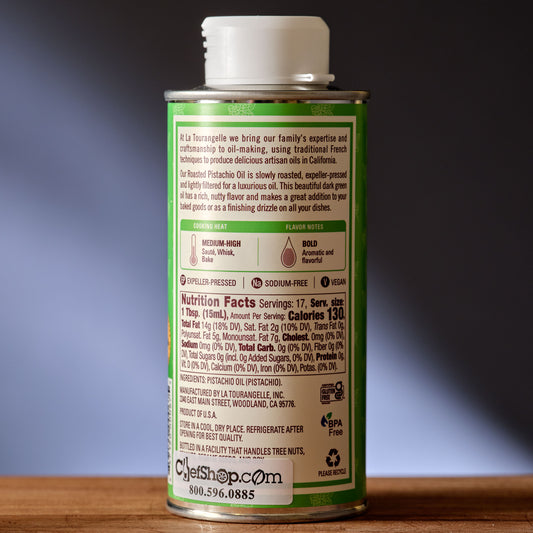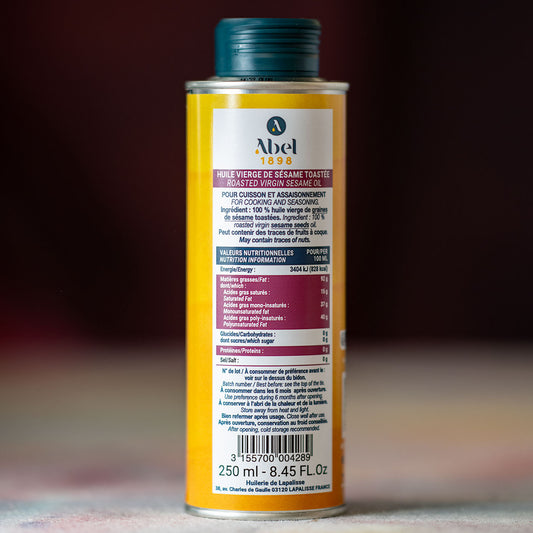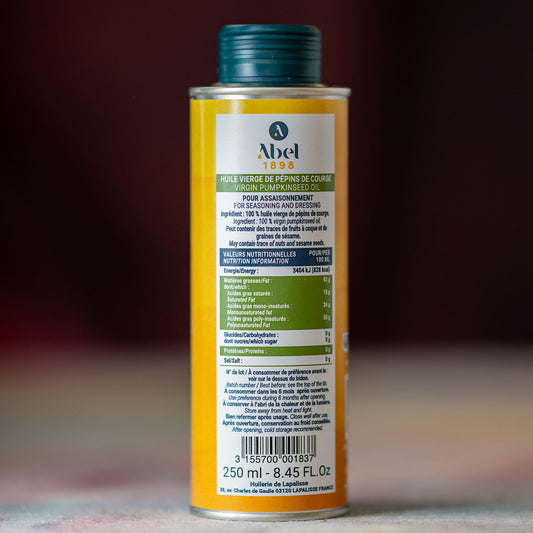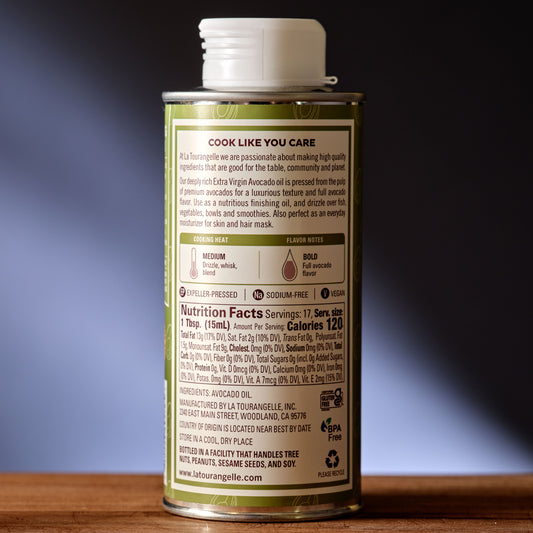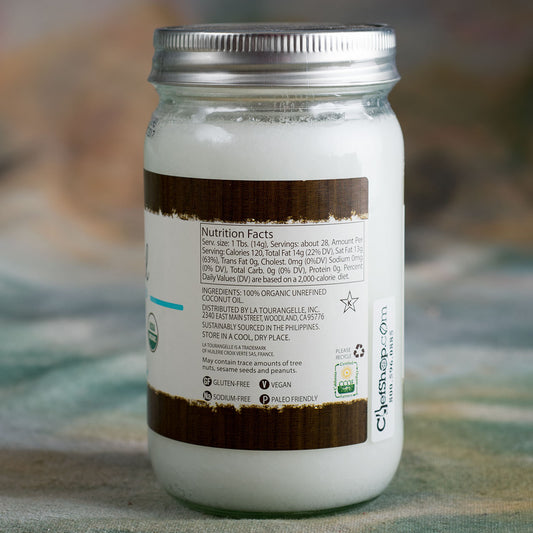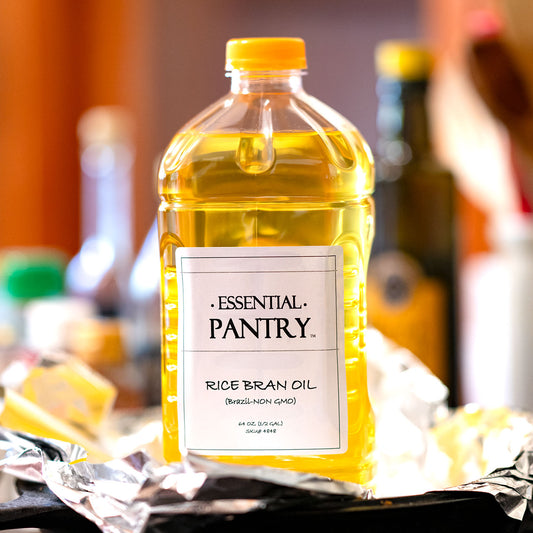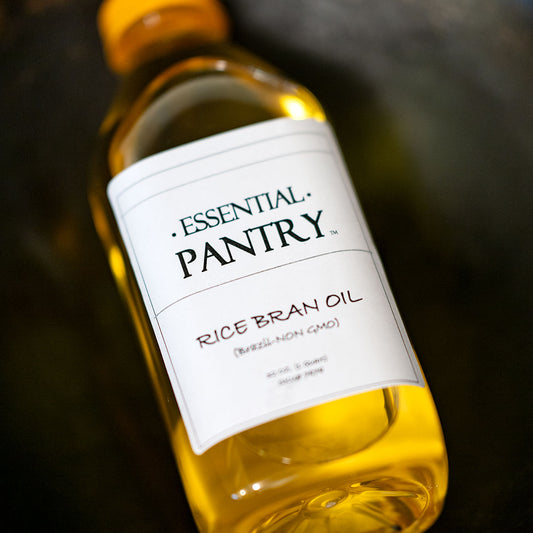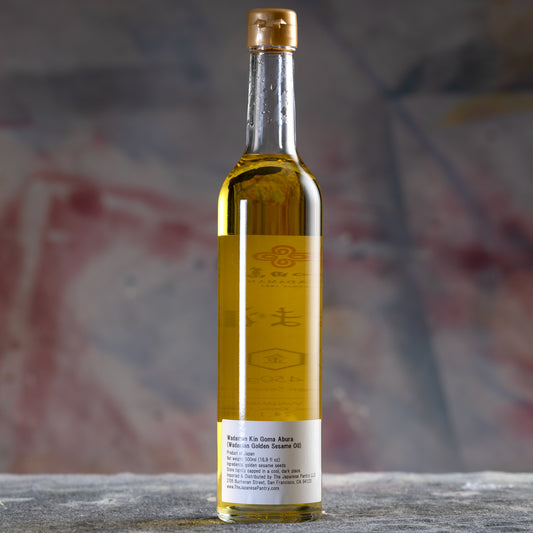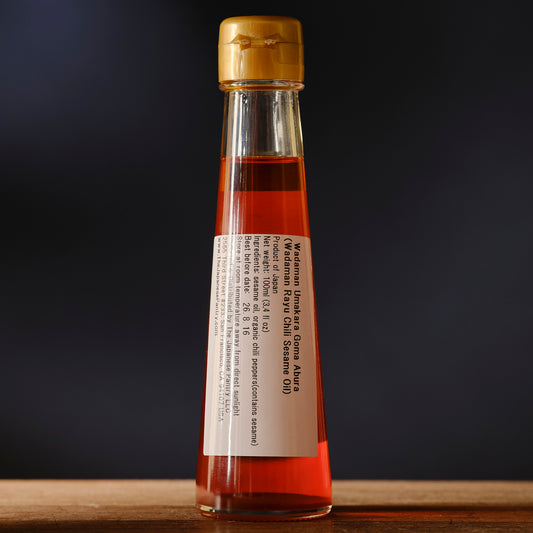Oils - Nut and Seeds
about Oils - Nut and Seeds: click here to read more
Culinary oils can be made from a wide variety of plant sources, each with its own distinct flavor, nutritional profile, and uses.
Oils are typically fats that are extracted from plants, seeds, nuts, or fruits. These oils are usually liquid at room temperature and can be used in cooking, baking, or as finishing oils. Oils contain the essential fatty acids, vitamins, and sometimes flavors that come from the original plant material.
Culinary oils are typically made through two primary methods: cold-pressing and refining. Cold-pressing, often used for high-quality oils like olive or sesame oil, involves mechanically pressing the seeds, nuts, or fruit (such as olives) to extract the oil without using heat or chemicals.
This helps retain the natural flavors, nutrients, and antioxidants of the plant material. In contrast, refining is a more complex process used for oils like canola or soybean oil, which may involve multiple steps such as degumming, neutralizing, deodorizing, and bleaching.
The raw oil is first cleaned to remove impurities, then refined to neutralize any strong flavors or odors, making it more suitable for high-heat cooking and giving it a neutral flavor.
Some oils, like coconut oil, may undergo fractionation, where they are heated and separated into different components based on their melting points, resulting in either a liquid or solid oil, depending on the type.
The final oil is then filtered to remove any remaining solids before being packaged for use. Depending on the method used, the end product can vary in flavor, nutritional content, and suitability for different types of cooking.
-
Maneyrol Virgin French Walnut Oil
Regular price $29.95 USDRegular priceUnit price / per$0.00 USDSale price $29.95 USD -
La Tourangelle Grapeseed Oil
Regular price $13.95 USDRegular priceUnit price / per$0.00 USDSale price $13.95 USD -
La Tourangelle Roasted Pistachio Oil
Regular price $16.95 USDRegular priceUnit price / per$0.00 USDSale price $16.95 USD -
Abel 1898 Roasted Virgin Sesame Seed Oil
Regular price $13.95 USDRegular priceUnit price / per$0.00 USDSale price $13.95 USD -
Abel 1898 Virgin Pumpkinseed Oil
Regular price $22.95 USDRegular priceUnit price / per$0.00 USDSale price $22.95 USD -
Castelmuro Pure Roasted Styrian Pumpkin Seed Oil
Regular price $25.95 USDRegular priceUnit price / per$0.00 USDSale price $25.95 USD -
La Tourangelle Avocado Oil
Regular price $16.95 USDRegular priceUnit price / per$0.00 USDSale price $16.95 USD -
La Tourangelle Organic Virgin Coconut Oil
Regular price $15.95 USDRegular priceUnit price / per$0.00 USDSale price $15.95 USD -
La Tourangelle Roasted Hazelnut Oil
Regular price $13.95 USDRegular priceUnit price / per$0.00 USDSale price $13.95 USD -
Rice Bran Oil
Regular price $18.95 USDRegular priceUnit price / per$0.00 USDSale price $18.95 USD -
Rice Bran Oil - 32 oz
Regular price $13.95 USDRegular priceUnit price / per$0.00 USDSale price $13.95 USD -
Wadaman Dark Roasted Golden Sesame Oil - 500 ml
Regular price $80.95 USDRegular priceUnit price / per$0.00 USDSale price $80.95 USD -
Wadaman Golden Sesame Oil - 500 ml
Regular price $86.95 USDRegular priceUnit price / per$0.00 USDSale price $86.95 USD -
Wadaman Rayu Chili Sesame Oil
Regular price $29.95 USDRegular priceUnit price / per -
Rice Bran Oil - 35# Jug
Regular price $99.95 USDRegular priceUnit price / per$0.00 USDSale price $99.95 USD -

 Restocking - choose Notify me
Restocking - choose Notify meLa Tourangelle Toasted Sesame Oil
Regular price $16.55 USDRegular priceUnit price / per$0.00 USDSale price $16.55 USDRestocking - choose Notify me -
 Restocking - choose Notify me
Restocking - choose Notify meSpicy Mustard Seed Oil - Australia
Regular price $27.95 USDRegular priceUnit price / per$0.00 USDSale price $27.95 USDRestocking - choose Notify me -
 Restocking - choose Notify me
Restocking - choose Notify meWadaman Organic Golden Sesame Oil
Regular price $47.95 USDRegular priceUnit price / per$0.00 USDSale price $47.95 USDRestocking - choose Notify me -
Restocking - choose Notify me
Wadaman Black Sesame Oil - 500 ml
Regular price $58.95 USDRegular priceUnit price / per$0.00 USDSale price $58.95 USDRestocking - choose Notify me -

 Restocking - choose Notify me
Restocking - choose Notify meLa Tourangelle Roasted Almond Oil
Regular price $14.95 USDRegular priceUnit price / per$0.00 USDSale price $14.95 USDRestocking - choose Notify me -

 Restocking - choose Notify me
Restocking - choose Notify meLa Tourangelle Roasted Pecan Oil
Regular price $12.95 USDRegular priceUnit price / per$0.00 USDSale price $12.95 USDRestocking - choose Notify me -

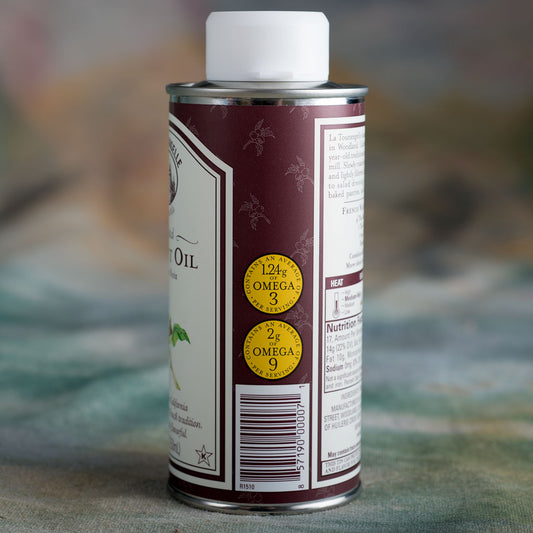 Restocking - choose Notify me
Restocking - choose Notify meLa Tourangelle Roasted Walnut Oil
Regular price $8.95 USDRegular priceUnit price / per$0.00 USDSale price $8.95 USDRestocking - choose Notify me -

 Restocking - choose Notify me
Restocking - choose Notify meAbel 1898 French Hazelnut Oil
Regular price $13.95 USDRegular priceUnit price / per$0.00 USDSale price $13.95 USDRestocking - choose Notify me -

 Restocking - choose Notify me
Restocking - choose Notify meAbel 1898 Huile de Noix Walnut Oil
Regular price $13.95 USDRegular priceUnit price / per$0.00 USDSale price $13.95 USDRestocking - choose Notify me -

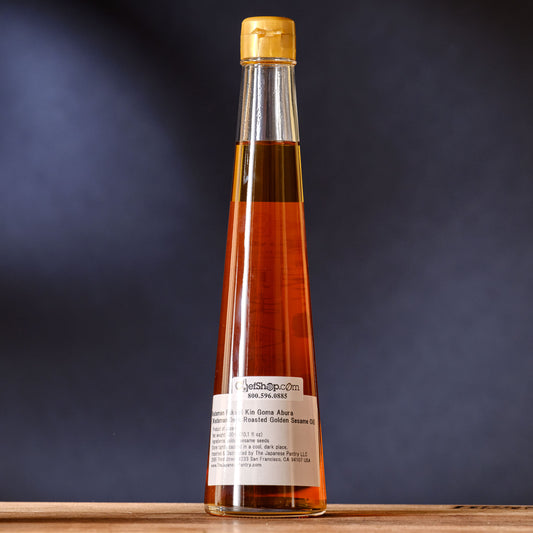 Restocking - choose Notify me
Restocking - choose Notify meWadaman Dark Roasted Golden Sesame Oil
Regular price $58.95 USDRegular priceUnit price / per$0.00 USDSale price $58.95 USDRestocking - choose Notify me



